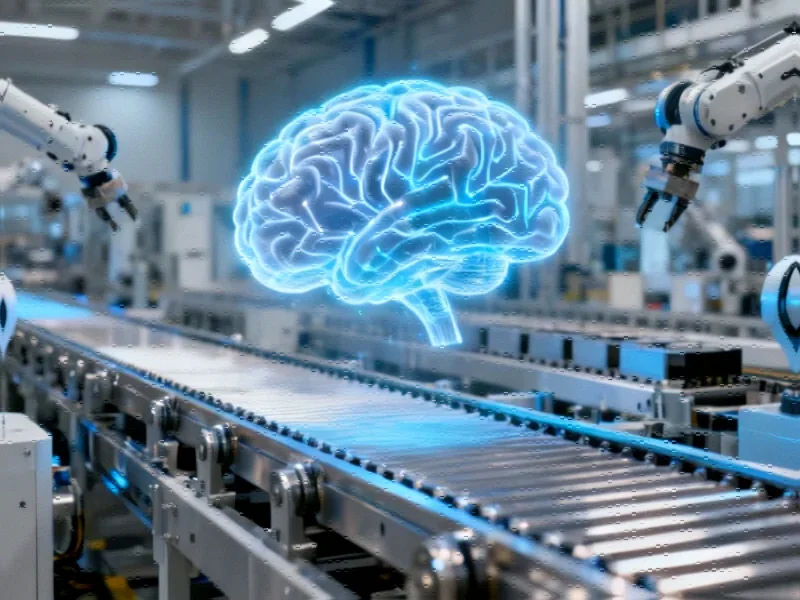The Shifting Landscape of Corporate Training
As artificial intelligence continues to reshape business operations, companies are discovering that traditional training approaches are becoming obsolete. The rapid evolution of AI technologies demands a fundamental rethinking of how organizations prepare their workforce for this new era. Unlike previous technological shifts where skills remained relevant for years, AI capabilities are advancing at an unprecedented pace, creating what many experts are calling the “training treadmill effect.”
Table of Contents
Business Risk or Competitive Advantage?
Organizations now face a critical choice: view AI readiness as either a significant business risk or a substantial competitive opportunity. Recent surveys indicate that companies identifying AI integration as their primary barrier to financial targets have increased by over 75% in the past year alone. This recognition is driving unprecedented investment in workforce development, with companies like Citi and Walmart making substantial commitments to AI literacy programs.
“We’re treating this AI revolution as an opportunity to gain a competitive advantage,” says Peter Fox, head of learning at US bank Citi. “So we need to give employees the ability to use it to the best of their capabilities.”, as previous analysis, according to technology trends
The Pervasiveness Problem
What makes AI training particularly challenging is its universal application across organizational roles. Unlike previous workplace technologies that primarily affected specific departments, AI impacts positions from frontline retail workers to C-suite executives. Walmart’s Chief Talent Officer Lo Stomski emphasizes that “with AI becoming a component of nearly every role in our company, we need to make sure associates know how to put it to work to serve customers, solve problems and move faster.”
Customized Learning Pathways
Successful AI upskilling requires recognizing that different roles interact with AI in fundamentally different ways. Organizations are developing customized training approaches that address specific use cases:, according to technological advances
- Frontline operations: AI-driven task management tools for scheduling and efficiency
- Customer service: AI-assisted problem resolution and communication
- Executive leadership: Strategic planning and research augmentation
- Technical teams: Development of specialized AI agents for specific tasks
The Agile Training Imperative
Traditional corporate training programs, which typically require three to six months to develop, are no longer sufficient for AI education. Simon Brown, global learning and development leader at EY, explains the necessary shift: “The pace of change with AI is like nothing we’ve ever seen before. That means taking a disposable view and renewing training programmes in six months’ time when the world has changed again.”
Leveraging AI for AI Training
Forward-thinking organizations are using AI technologies themselves to facilitate more effective upskilling. Adaptive learning platforms can personalize content delivery based on individual roles, existing knowledge, and learning pace. As Brown notes about EY’s approach, “The AI learning portal understands who you are and gives you what you need, rather than everything that’s out there.” This targeted approach helps prevent employee overwhelm while ensuring relevance.
Ethical Considerations and Responsible Implementation
Beyond technical proficiency, companies must address the ethical dimensions of AI implementation. Sophie Walker, senior adviser for sustainability and responsible AI at EQT, emphasizes that “this is about technology in service of humans, not humans in service of technology.” Organizations are developing comprehensive AI governance frameworks and literacy programs that extend beyond technical skills to include ethical decision-making capabilities at every organizational level.
The Future of AI-Ready Organizations
The most successful companies will be those that treat AI upskilling as an ongoing process rather than a one-time initiative. This requires creating learning cultures where continuous skill development becomes embedded in daily operations. As Walker concludes, “The ability of human beings to leverage the technology is critical for it to deliver financial value.” The organizations that master this balance between technological capability and human judgment will likely emerge as leaders in the AI-driven economy.
The transformation extends beyond individual companies to entire business ecosystems. As EY’s experience demonstrates, companies that effectively implement AI internally become more credible advisors to clients navigating similar challenges. This creates a virtuous cycle where practical experience informs both service delivery and ongoing workforce development.
Related Articles You May Find Interesting
- Understanding Excel’s Double Square Bracket Formulas: A Technical Breakdown
- Engineered CAR-T Cells with Collagen-Targeted IL-12 Show Promise in Prostate Can
- Elon Musk’s Unprecedented Compensation Saga: Power, Performance, and Shareholder
- AI Tutor Bots: Reshaping Education Through Personalized Learning Support
- IBM Leans on Hyperscaler GPUs While AI Drives Productivity and Revenue Growth
This article aggregates information from publicly available sources. All trademarks and copyrights belong to their respective owners.
Note: Featured image is for illustrative purposes only and does not represent any specific product, service, or entity mentioned in this article.



